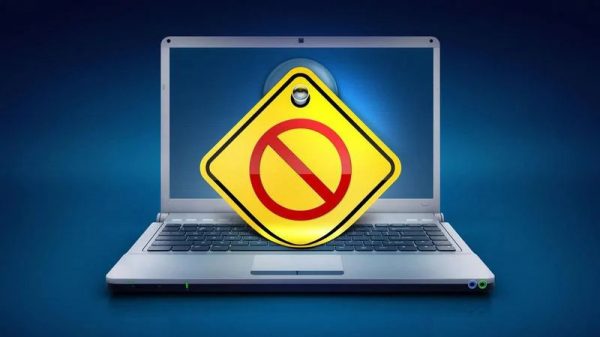While many of us might have had a restful weekend, it was anything but that for the startup industry, especially in the US, in the wake of the crisis at Silicon Valley Bank (SVB).
After US regulators shut down SVB on March 10, the weekend was spent in daunting uncertainty for all the startups who had accounts in SVB as they didn’t know how they would manage payroll, pay bills, receive payments, etc.
Ultimately, the US government stepped in on Sunday evening to announce that depositors will have access to all their money, but this wasn’t before the crisis, which is being seen as the largest bank failure since the 2008 financial crisis, raised alarm bells across the world. In India, for example, the IT Minister said that he will meet with affected startups and figure out how the government can help, and in the UK, HSBC bought SVB’s UK arm for £1 (yes, 1 pound).
Why was SVB shut down by regulators: Regulators were forced to shut down SVB because it was facing a bank run, which is when an unusually high number of depositors want to withdraw their money at the same time but the bank is not able to meet these obligations because it has lent out a lot of this money.
Why was SVB facing a bank run: At the risk of oversimplification, here is what led to the bank run at SVB:
- After successfully pitching itself as a bank for startups, SVB was thriving over the last three years, growing from $60 billion in deposits in 2019 to over $189 billion at the start of 2022.
- All that money could not lie idle, so SVB invested a good chunk of it in US Treasuries and Mortgage-Backed Securities (MBS) which yielded an average return of 1.5%. You don’t need to know what these securities are, but know that these investments were not a terrible move at the time given that interest rates in the US were very low, and a 1.5% return from these very low-risk securities was great in comparison.
- But the US government started raising interest rates in 2022, going up to its current rate of 4.75%, making SVB’s investments look bad in comparison because the bank could have invested elsewhere for a higher return instead.
- To make matters worse, SVB was not getting a lot of new deposits as startup funding also dried up in 2022.
- To give itself some wiggle room, SVB decided to sell some of its securities, but it had to do so at a significant loss. The bank sold securities worth $21 billion at a loss of about $1.8 billion.
- The selling of securities at a loss, along with plans to raise money by selling more shares, spooked SVB investors, who worried about the financial health of SVB. The bank’s share price plummeted by 60%. Eventually, SVB cancelled its plans to sell shares, not that it helped.
- One thing led to another, and startup founders were spooked about the safety of their deposits, thanks in large part to Venture Capitalists (VCs), who advised founders to get their money out of SVB. This eventually led to the bank run that forced regulators to shut down SVB.
Charlie Munger tells a story about human nature: pic.twitter.com/lCwEj1B7Ry
— David Senra (@FoundersPodcast) March 12, 2023
Want to know more about what went wrong? If our quick summary wasn’t enough, we got you covered with some of the best explainers and analyses on the crisis:
- Startup Bank Had a Startup Bank Run (Matt Levine/Bloomberg)
- The tech industry moved fast and broke its most prestigious bank (The Verge)
- The Demise of Silicon Valley Bank (Marc Rubinstein/Net Interest)
- A Bank of One’s Own (Nadia Asparouhova/Monomythical)
- Transcript: Treasury Secretary Janet Yellen on “Face the Nation,” March 12, 2023 (CBS News)
- Twitter threads: Sam Altman (former president of Y Combinator), Morning Brew Daily, Jamie Quint (General Partner at Uncommon Capital),
Would like to listen instead? Here’s an insightful Twitter Spaces conversation between Capitalmind CEO Deepak Shenoy and MediaNama’s Editor Nikhil Pahwa:
LIVE: *What is the Silicon Valley Bank (SVB) crises all about?* ▶️▶️
Learn from @deepakshenoy (@capitalmind_in) in conversation with @nixxin (@medianama) tonight at 9pm on Twitter Spaces.
▶️ RSVP / Join Twitter Spaces at 9PM IST: https://t.co/EcSjNkjC8Y
— EDGE Community (@EDGECommunityHQ) March 11, 2023
What happened next: After the bank was shut down, the Federal Deposit Insurance Corporation (FDIC) took control of the bank’s deposits and assets and scrambled to find other banks that were willing to merge with SVB and infuse capital. FDIC insures deposits up to a value of $250,000 and said that the same would be available from Monday, but as was quickly pointed out, close to 90% of SVB’s assets were uninsured as startups had millions and billions of dollars in their accounts above the insured amount. FDIC planned to sell SVB’s assets over time to get the uninsured amount to depositors, but these plans were murky and had no clear timeline.
What now: According to the Sunday evening announcement by the US Department of the Treasury, Federal Reserve, and FDIC, all depositors will be able to access all their money, not just the insured amount, from Monday (March 13) and can move them to a different bank.
Is this a bailout or not: The US government announcement made it a point to clarify that “no losses associated with the resolution of Silicon Valley Bank will be borne by the taxpayer,” to address any concerns that it will be seen as a bailout. “Any losses to the Deposit Insurance Fund to support uninsured depositors will be recovered by a special assessment on banks, as required by law,” the government clarified. But not everyone is convinced. Some believe it is still a bailout going by another name, while most think it is not.
This was not a bailout. During the GFC, the gov’t injected taxpayer money in the form of preferred stock into banks. Bondholders were protected and shareholders were diluted to varying degrees. Taxpayer money was put at great risk. Many people who screwed up suffered minimal to… https://t.co/mjwcnVRV9X
— Bill Ackman (@BillAckman) March 13, 2023
A bank that took risks and served people who had dreams but no capital: While it might be easy to dismiss the crisis as something that SVB brought upon itself and as something that affects only the rich startups, that would be a misguided take. In this Substack piece, Nadia Asparouhova writes about how SVB served many who had creative ideas but lacked access to capital.
“Silicon Valley Bank is not a bank for rich people. It’s a bank that served the needs of a very particular ecosystem with a very particular set of financial circumstances, which enabled decades of creativity and entrepreneurialism to thrive.”
This piece by @nayafia is hands-down the *best* thing written about SVB: https://t.co/X4gjNLdHep pic.twitter.com/qWTOCpJuVk
— Umang Jaipuria (@umang) March 11, 2023
What’s Signature Bank and where does it come into the picture: Soon after the SVB crisis began, regulators in New York were forced to shut down Signature Bank, which was one of the main banks used by crypto firms, for similar reasons as SVB. As with SVB, the US government has guaranteed that all deposits will be available in full starting Monday (March 13).
An interesting, but not unexpected problem we might run into tomorrow:
Now that the FDIC has protected depositors at Signature and SVB, the big question ? Will their website and online systems be able to handle the crush of traffic tomorrow ?
— Mark Cuban (@mcuban) March 12, 2023
And from tomorrow, back to regular programming:
Looking forward to everyone going back to being an AI expert here.
— M.G. Siegler (@mgsiegler) March 12, 2023
Also Read





























